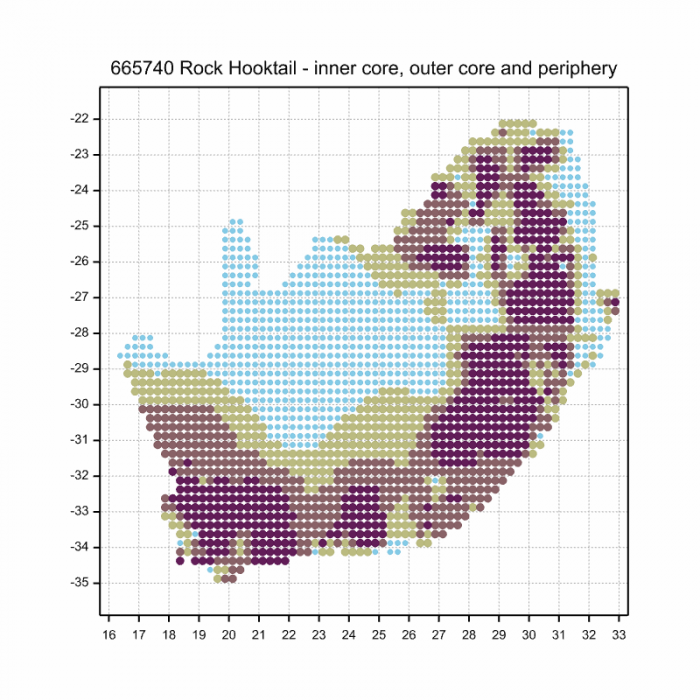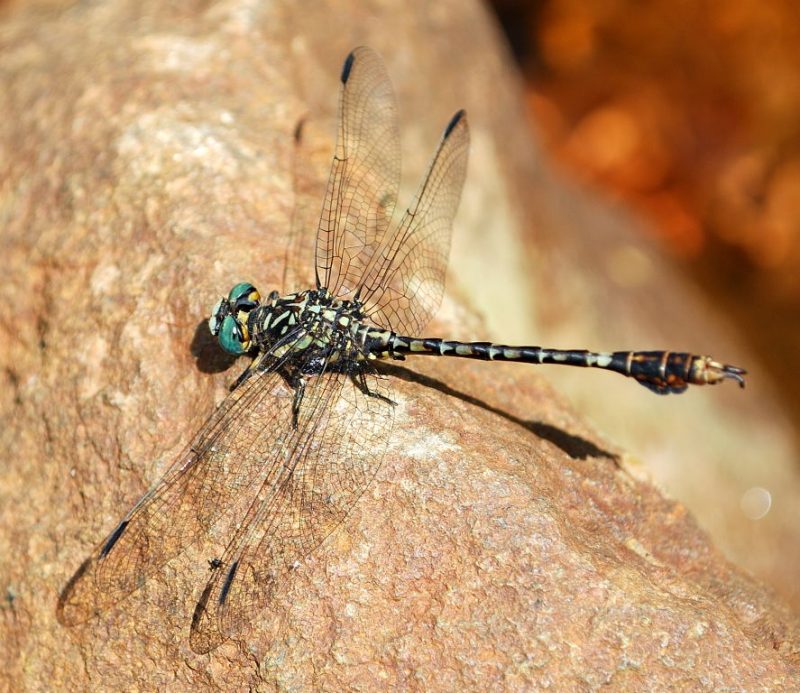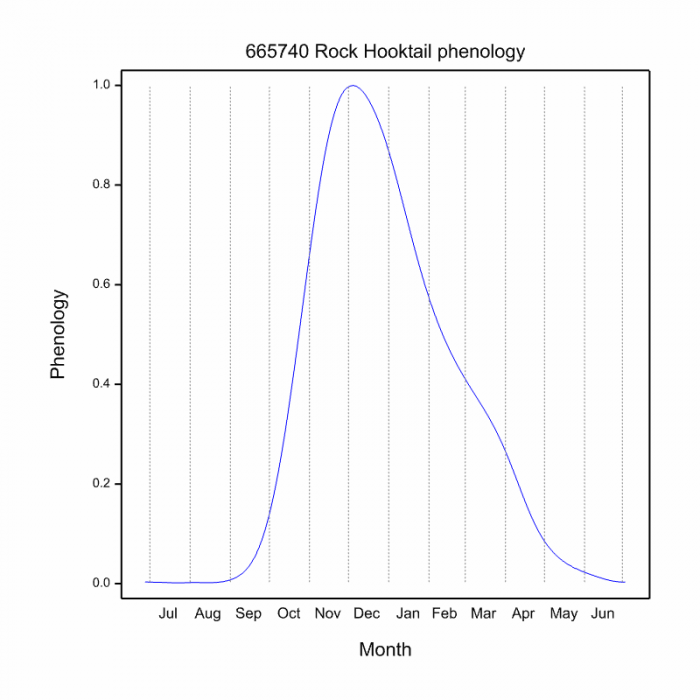View the above photo record (by Gerhard Diedericks) in OdonataMAP here.
Find the Rock Hooktail in the FBIS database (Freshwater Biodiversity Information System) here.
Family Gomphidae
Paragomphus cognatus – ROCK HOOKTAIL
Identification
Medium sized
Length reaches 46mm; Wingspan attains 60mm.
Males are easily recognised by their dark-tipped upper claspers that splay outwards near the tip.
Individuals from higher rainfall areas tend to be darker in colour.
Most similar to Flapper Hooktail (Paragomphus sabicus) and Common Hooktail (Paragomphus genei). Paragomphus sabicus is larger, brighter yellow and has slender, elongate upper claspers. Paragomphus genei is of similar size but has a green thorax and yellowish upper claspers, that do not curve outwards near the tip.
Click here for more details on identification of the Rock Hooktail.

Moordkuil River, Western Cape
Photo by Ryan Tippett

Near Kosi Bay, KwaZulu-Natal
Photo by Ryan Tippett
Habitat
Frequents rock-strewn rivers and streams, in both open and more wooded habitats. Often frequents rocky river pools or seen on mid-stream rocks.

Photo by Alex Briggs
Behaviour
Mostly seen sitting prominently on rocks close to the water. Less often seen perched on vegetation. Sometimes seen hunting from bushes away from water. Hunts from a perch, but quickly settles again.
Status and Conservation
A common species, listed as of least Concern in the IUCN Red List of Threatened species. The Rock Hooktail is a fairly hardy species but is nonetheless restricted to natural riverine habitat.
Distribution
Paragomphus cognatus is widespread and occurs in Southern and East Africa, ranging from the Western Cape in South Africa up to Kenya and Uganda in the North. It also occurs across South-central Africa to parts of Angola and northern Namibia.
In South Africa it is widespread in the South and east, but is largely absent from the central interior.
Below is a map showing the distribution of records for Rock Hooktail in the OdonataMAP database as at February 2020.

The next map below is an imputed map, produced by an interpolation algorithm, which attempts to generate a full distribution map from the partial information in the map above. This map will be improved by the submission of records to the OdonataMAP section of the Virtual Museum.


Ultimately, we will produce a series of maps for all the odonata species in the region. The current algorithm is a new algorithm. The objective is mainly to produce “smoothed” maps that could go into a field guide for odonata. This basic version of the algorithm (as mapped above) does not make use of “explanatory variables” (e.g. altitude, terrain roughness, presence of freshwater — we will be producing maps that take these variables into account soon). Currently, it only makes use of the OdonataMAP records for the species being mapped, as well as all the other records of all other species. The basic maps are “optimistic” and will generally show ranges to be larger than what they probably are.
These maps use the data in the OdonataMAP section of the Virtual Museum, and also the database assembled by the previous JRS funded project, which was led by Professor Michael Samways and Dr KD Dijkstra.



